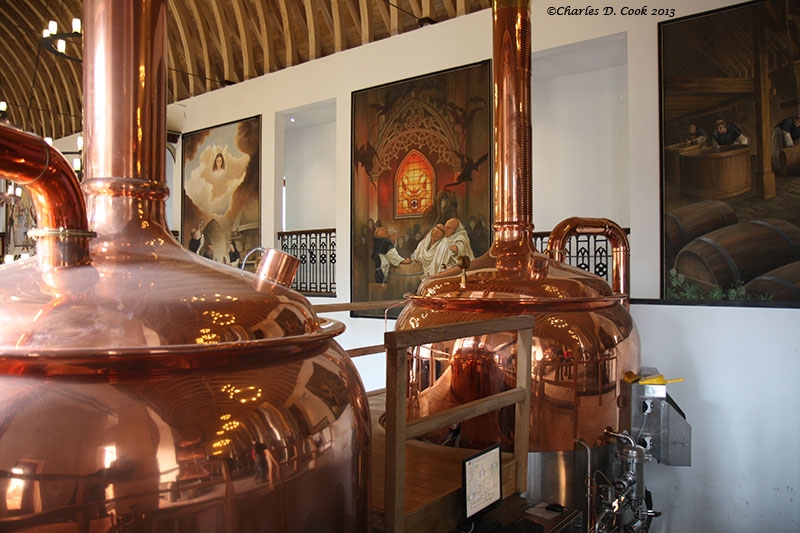The walls of the brewery building are covered with colorful scenes of monks in various stages of beer production-and enjoyment. “All these murals come from Flanders,” Maes told me. “One is a bit risqué, as you can see,” he said.
I suspect all these scenes are from the imagination of a modern-day artist, and not directly from the middle ages. They do make for good conversation, and as a fine backdrop to the brasserie.
The German-built Schulz brewhouse is copper on the outside, and stainless steel on the inside. It is a completely automated 20-hectoliter (17 U.S. barrel) system. “Two people can easily run this brewery,” Maes remarked. “As far as ingredients, we only used malted barley here. No wheat or other grains are used in the Cambron beers. This is because our intention is to make traditional abbey beers,” he added.

The two-vessel system has multiple uses: grain is sent to the mash tun via a conveyer, and water is automatically added to it. After the mashing process, the wort is sent to a filtration tank for filtering. The wort is then sent back to the mash tun, which doubles as the boiling kettle. After boiling, the wort is sent to a whirlpool. There is then aeration of the wort, after which the wort is transferred to fermentation vessels, where it will mature and become beer.
“We have five 40 hl fermenters, and two in the 20 hl size. We also have three 20 hl bright beer tanks, and five 20 hl duotanks. Beer is drawn directly from the duotanks to the draft system in the brewery café and restaurant,” Maes said.
After fermentation, both bottling and kegging are done on site. 75cl corked bottles are used, as well as 20-liter kegs for the eight restaurants located throughout the park. “We can fill about 500 bottles per hour, so we normally fill 2,000 bottles four times a week,” Maes remarked.

Visitors can take beer away in 5-liter mini kegs and the bottles. “Most of our draft beer is sold on site, and we will likely keep it that way,” Maes commented as we toured the brewery. He continued: “We brew about four times a week, so that is 80 hectos each week. We hope to produce about 2,000 hl of beer here this year (2013) and 3,000 in 2014. I think we could do about 5,000 hl maximum with this system, with just one shift a day.”


Leave a Reply